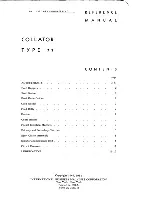
FIG� 2
FIG� 1
4
SAFE OPERATION AND USE OF THIS SAWHORSE
1. When lifting the sawhorse, use proper lifting techniques to avoid personal injury.
2. Ensure work area is well lit while working.
3. Ensure sawhorse is standing on a level surface that is clear, dry and free of debris.
4. Ensure all four legs have solid contact with the floor. If the sawhorse is not positioned
level and straight, loads placed upon it could fall, potentially causing damage to the
item(s) loaded on it, and possible severe personal injury or death.
5. Ensure the load placed on any sawhorse does not exceed the applicable Safe Working
Load Rating. Overloading can lead to failure of the sawhorse, potentially causing damage
to the item(s) loaded on it, and possible severe personal injury or death.
6. Never stack sawhorses to obtain extra height.
CAUTION:
Do not apply weight in excess of 1,100 lbs. (498 kg) of uniformly distributed
load on sawhorse. Do not use as a step ladder or standing platform.
Uniformly-Distributed Load:
The maximum uniformly distributed load across the top rail of the sawhorse,
PER EACH SAWHORSE.
This means that the maximum weight that can be applied to this sawhorse, per lineal foot,
as is stated on the retail sticker and the instructions. “Uniformly-Distributed Load” means
when all the weight is distributed evenly on the top rail. The amount of weight that can
be applied to two identical sawhorses is double this value. For example, a pallet or skid
weighing not more than two times the Safe Working Load Rating can safely be carried by
two of these sawhorse.
SETTING UP YOUR SAWHORSE
1. Press the Release Button and fold down the first set of legs (Fig 1).
2. Make sure legs and 2x4 support are fully deployed (Fig 2).
3. Spread legs and be sure to push the cross brace flat (Fig 3).
4. Press Release Button and fold down second set of legs (Fig 4).
5. Make sure legs and 2x4 supports are fully deployed (Fig 5).
6. Spread legs and be sure to push the cross brace flat (Fig 6).
7. Fold out the Material Support Pegs to hold material for cutting (Fig 7).
8. Place 2x4s in Support Arms and place a sheet on top to make a work table (Fig 8).
Содержание SH-047
Страница 2: ...2...
Страница 5: ...FIG 7 FIG 8 FIG 4 FIG 3 FIG 5 FIG 6 5...
Страница 7: ...7 NOTES...


























